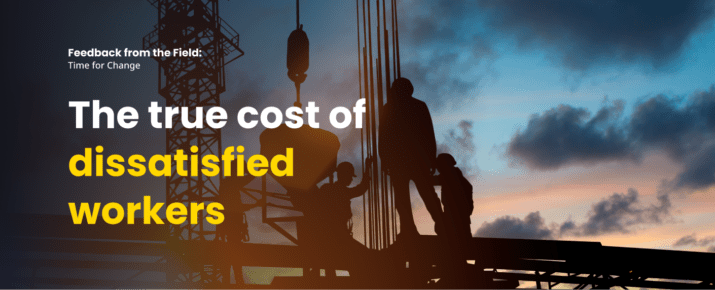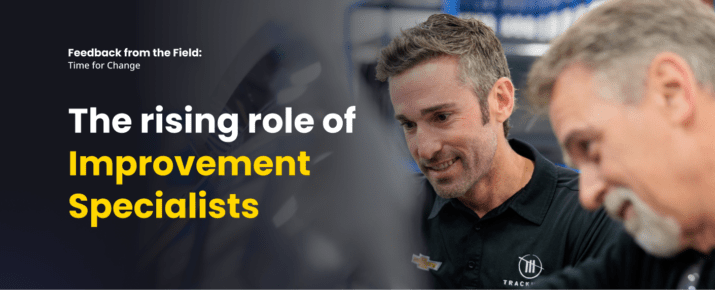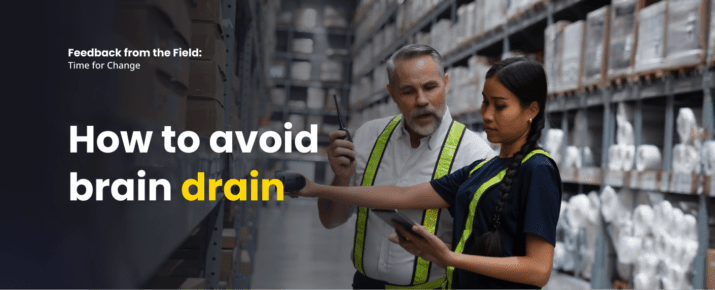Feedback from the field: Workers are not receiving workplace health and safety training
Feedback From The Field | Industry Trends | By | 27 Apr 2022 | 3 minute read

The last few years brought on sweeping changes — and challenges — across workplaces and industries. Teams found their roles transformed as health and safety came to the fore of decision making processes. Once only relevant to high-risk industries, the issues championed by United Nations World Day for Health and Safety at Work became a priority for all. But is our focus slipping?
Recent research conducted by SafetyCulture and YouGov has identified an urgent need for businesses and their frontline workers to reprioritize workplace health and safety.
The data released today by SafetyCulture and YouGov represents the views of American, British and Australian “frontline workers” – defined as individuals who must “physically show up to their job”, including the likes of hospitality, retail, manufacturing, and logistics workers.
The survey revealed….
- Less than half of frontline workers (44%) said they had received workplace health and safety training in the past year.
- Only 1 in 5 frontline workers (20%) have received bullying and harassment training in the last year.
- More than 1 in 5 frontline workers (24%) went on to say they hadn’t received any form of training in the past year.
- More than 1 in 4 frontline workers (29%) are unsure where to find their company’s workplace health and safety policy, with a further 1 in 10 (11%) unsure if it even exists.
Bob Butler, Global General Manager of SafetyCulture said, “Our research shows that a degree of complacency is creeping into workplaces as we emerge from the pandemic and companies battle ongoing labor shortages, increased demands on productivity, and workplace burnout. However, working with our customers around the world, we continue to see how simple it can be to harness new technology, implement small changes and start the wheel of continuous improvement.”
“Today is the perfect opportunity to start putting health and safety firmly back on the agenda. Technology can help sharpen our focus, making sure every detail and element of risk is accounted for in business operations. Every worker has a role to play in preventing occupational accidents and their employers can help by investing in the right tools and effective training.”
Prioritizing frontline safety is more than just ticking a box, it lays a foundation that brings out the best in your team, your protocols and your outputs. Doing so doesn’t need to be complicated. Here’s how you can get started:
Build a frictionless experience
SafetyCulture has helped some of the world’s largest industries embed a culture of safety and accountability in their organizations. In doing so, we’ve found frictionless experiences are key to fighting process fatigue. Working environments were already complex and fast-moving. To help navigate evolving compliance measures, organizations need to remove technological red tape. It’s time to take stock of digital systems in place — how can you enhance what’s there to streamline processes and make them easy to maintain?
Maintain a birds-eye view
Data is key to visibility. When used well, data equips companies with actionable information so that all employees can quickly adapt their processes and strategies to match the needs of the changing external environment. Understand what’s going on with regular inspections for compliance and standardization, compile your customer and employee feedback in one place, and conduct regular risk assessments to get a 360 view of your operations ecosystem. From there, you can use your data to pinpoint weaknesses and take action.
Create a competence-confidence loop
In the past, workplace training efforts were more concerned with compliance numbers than tangible learning outcomes. Now, the ability to deliver effective learning fast is critical for an increasingly dispersed workforce. As roles change and new safety measures arise, vast amounts of people need to get up to speed quickly. Mobile-first, microlearning tools are increasingly important to helping businesses train their workforce on compliance measures — as well as increase productivity, promote employee accountability, and enhance the customer experience.
Most businesses gloss over how they improved their safety operations within the last 12 months when really, they should capitalize on it. Check out how these industry experts are leveraging what they’ve learned to better their business.
About the research
All figures, unless otherwise stated, are from YouGov Plc. Total sample size was 1,980 adults (858 US, 553 Australia, 569 UK). Fieldwork was undertaken during April 2022. The survey was carried out online. The figures have been weighted and are representative of US, UK and AU frontline workers (aged 18+).
Important Notice
The information contained in this article is general in nature and you should consider whether the information is appropriate to your specific needs. Legal and other matters referred to in this article are based on our interpretation of laws existing at the time and should not be relied on in place of professional advice. We are not responsible for the content of any site owned by a third party that may be linked to this article. SafetyCulture disclaims all liability (except for any liability which by law cannot be excluded) for any error, inaccuracy, or omission from the information contained in this article, any site linked to this article, and any loss or damage suffered by any person directly or indirectly through relying on this information.





